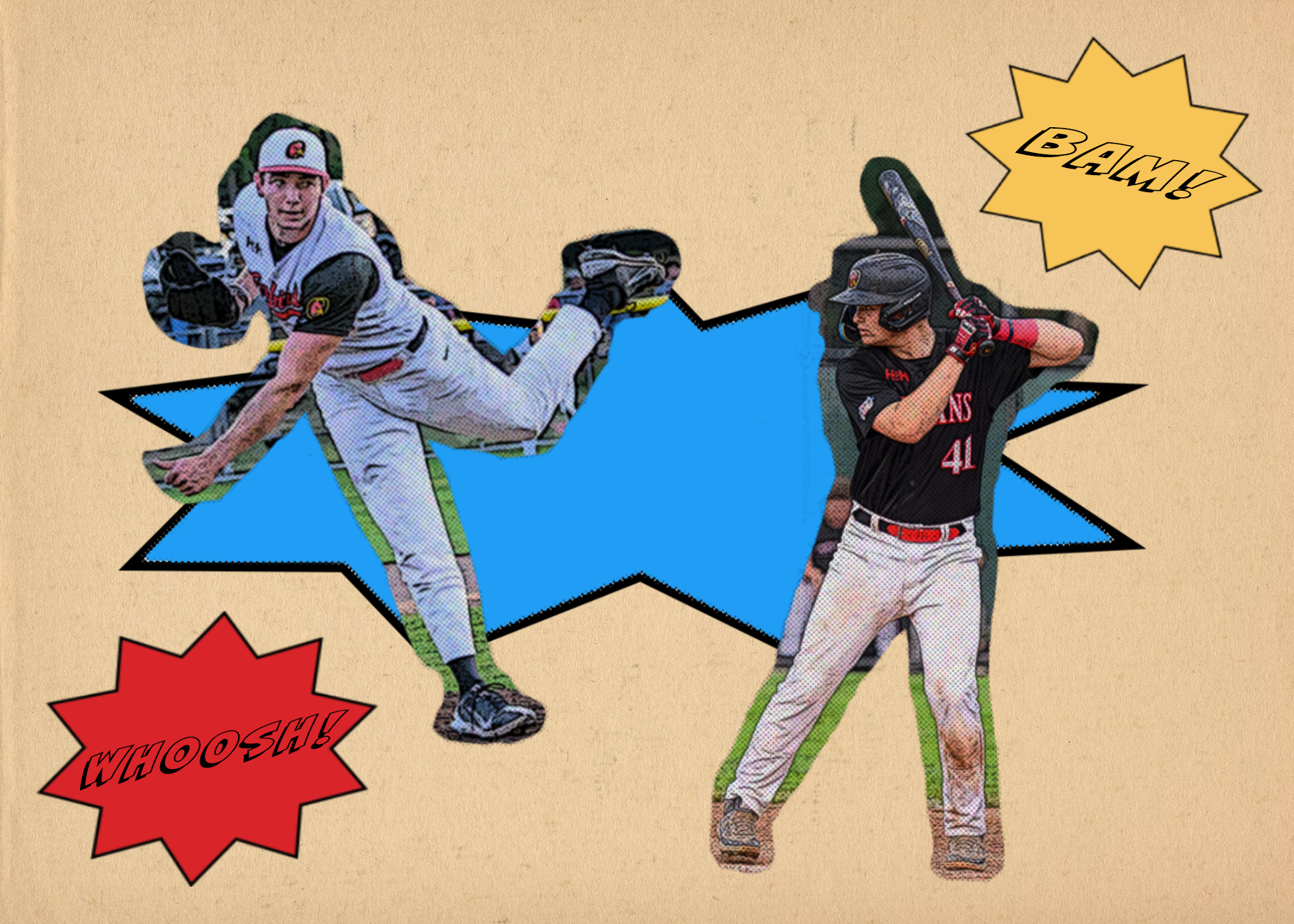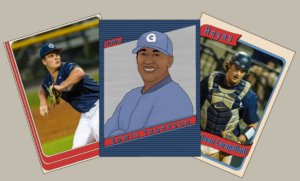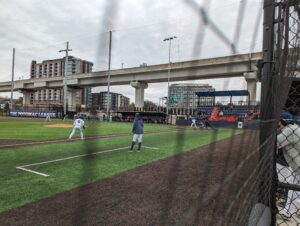I pull into the parking lot of the Falmouth Rec Center on June 13 to find it completely full of fans looking for a good game of Cape Cod Baseball League (CCBL) play. I park at Staples a block away.
When I make it back to the ballpark, I scan the bench of the Falmouth Commodores for #1. He’s not there. I look at the plate. Not there, either. I look at first base, but he’s already gone.
Michael Eze (CAS ’24) makes a break for second, beating the pitcher’s throw to steal the base. Then he steals third. Then, on a catcher’s error, he trots home.
Eze put the Commodores up 1-0 before they’d even registered a hit. He was released by the team the next week. Roster turnover is more than common in the early weeks of the CCBL, the premier collegiate summer league; it’s practically the law.
But Eze wasn’t out of it yet. On July 27, he got a call from the Commodores.
“I was at the beach with one of my friends from home,” Eze said. “You can’t pass up playing in the Cape, so the next day I drove from, like, 6 o’clock in the morning up to Falmouth, and we played Cotuit that day.”
He notched three hits, including two home runs, in a 27-2 Commodores victory.
The roster turnover of the CCBL, driven by the concurrent MLB draft and the chaos of an only 10-week-long season, demands a lot of flexibility from players. But for Eze, who moved from shortstop to outfield as a freshman simply because that’s where he was needed, flexibility wasn’t a big issue.
“I just try to be a versatile guy, just use my athletic ability to play wherever I can, so I can stay in the lineup,” he said.
The CCBL consists of 10 teams across Cape Cod, Mass., and boasts the highest level of competition of any summer league for college ballplayers. At every game, kids line the fences, asking for autographs from every player they can reach—because, as the prevailing wisdom goes, many will be in the big leagues soon enough.
Eze was one of four Hoyas who made an appearance in the CCBL this year at a time when Georgetown baseball seems to improve on school records every season—recently notching its first conference tournament win in May and getting a player drafted in the third round of the MLB draft in June.
On the Cape alongside Eze, catcher Owen Carapellotti (CAS ’25) played for the Orleans Firebirds throughout the summer, accompanied at points by outfielder Jake Hyde (SFS ’24) and pitcher Everett Catlett (CAS ’24).
Another familiar face joined Eze in Falmouth: the Georgetown team’s student manager Willie Baker (MSB ’25). Baker is from nearby Mashpee and worked as a dugout coach for the Commodores, whom he grew up watching.
“It’s been surreal,” he said. “We got pictures of me signing autographs for kids, and I think, wow, that kid was me. Some of my teammates would laugh at games where a foul ball goes up and you see 30 kids running everywhere trying to get it, and that was me and my buddies.”
Baker recalled watching the ball sail over the outfield fence in Eze’s stellar return game. Because of the roster turnover, he said, only one other player on the team had even been there for Eze’s first stint with the team.
“All the pitchers in the bullpen were like, ‘Wait, who is this guy? We already had him?’” Baker said. “And I was just so excited for him.”
The Commodores, exciting as they were in the regular season, made an unfortunately quick departure from the playoffs with two first-round losses. On the other side of the Cape, the Firebirds turned it on late with the help of last-minute addition Catlett, who was brought up after his season ended in another summer league.
“My team lost at 9:30 at night; I had my bags packed and I was driving up to Orleans by 10,” Catlett said. “I checked into my hotel at, like, 4 a.m., fell asleep, woke up at 8 o’clock, got up to Orleans at like 2:30, got my uniforms, and I pitched in the game that day.”
In the playoffs, the Firebirds swept consecutive series against Harwich and Yarmouth-Dennis in four thrilling, come-from-behind wins. In Game 1 of the second series, Catlett made his second appearance of the summer, taking the mound with a deficit and pitching five strong innings, giving his team the daylight to take the win on a grand slam in the eighth.
Though the Firebirds made it to the championship series streaking hot, it wasn’t all positives this summer, Carapellotti acknowledged. He felt he went through difficult stretches in his offense, and his biggest takeaway from the summer was how to handle failure and bounce back.
But ultimately, he said, the opportunity to play in the CCBL would have been hard to pass up.
“In Game 3 there were over 7,000 fans,” Carapellotti said of the championship series. “That was really cool.”
“I hadn’t pitched in front of that many people before—I was trying not to let it get to me,” Catlett said. “As a lefty pitcher, you look down the first base line where there’s like 2,000 people right there. So they’re sorta all up in your face when you’re a lefty pitcher at Eldredge Park.”
Unfortunately, the Firebirds came up short in the championship series—Catlett again took the mound while the Firebirds were trailing and played well in Game 1, but the team couldn’t muster the runs to make a comeback. They went on to lose in three.
But the real disappointment? Because of the roster turnover, the Orleans Hoyas never got to play the Falmouth Hoyas head-to-head.
“Me and Owen were talking trash the entire time, like, ‘Oh, if I get down there, I’m stealing every time I get on base,’” Eze said, laughing. “So he lucked out a little bit.”
Carapellotti didn’t consider himself lucky. “He rejoined them a day or two after we played them for the last time,” he said. “He knew I was gonna throw him out if he played me.”





